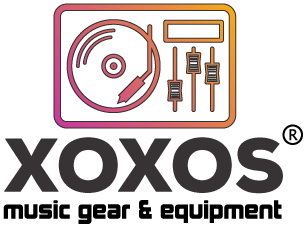Yamaha A-R801 Review
Yamaha have a long history in hi-fi, producing distinctively styled and beautifully built amplifiers like the CA1000 from 1973, wth slim, rectangular switch knobs that were a delight to use and looked good: form followed function. In their recent 100 Watt A-S801 I’m reviewing here they’ve returned to the style and the values of their past, updated with very modern components – including an ESS Sabre32 series digital convertor. Here’s a ‘digital amplifier’ then, one that gives you Yamaha quality – but at a very affordable price
Feet on ground: the A-S801 offers a lot, including a very good digital convertor chip – and to do so at the price it doesn’t have the build quality of yore. Even though it has a linear power supply with big mains transformer this amplifier is on the light side – weighing 12.1kgs (27lbs). The chassis and top cover are conventional folded sheet steel, the fascia a simple alloy plate with no end detail. In build then a tad lightweight, but satisfactory and with a good standard of finish. This amplifier is not Class D like so many nowadays, but a very well-developed nominally 100 Watts Class A/B all-analogue design.
And whilst the chassis might not be as solid as Yamahas I have used in the past, inside it houses a line up of facilities far beyond those of the past – Yamaha leave little out. Fitted with an ESS ES9010K2M DAC chip the A-S801 has a whole variety of digital inputs, including USB for connection to a computer for music replay. Traditional S/PDIF digital inputs offer connection via optical cable and electrical cable, the former working up to 192kHz sample rate, so the amplifier won’t fall silent when confronted by 24/192 digital over optical cable from sources such as portable music players (aka digital audio players or DAPs). The USB input accepts up to 394kHz sample rate PCM so plays all high-resolution digital audio files PCs and Macs can throw at it.
Bluetooth wireless connection is available as an optional extra, via an external receiver. Also playable is hi-res DSD digital from a PC if you load Windows with a Steinberg driver, available on Yamaha’s website. It packages DSD into a format (DoP) that can be sent over a USB connection, one this Yamaha can receive and deal with. Macs cannot send DSD over USB so this is for PC users only. In addition to the digital inputs there are five analogue Line inputs, CD, Tuner and three Lines, plus a Phono input for a turntable with moving magnet (MM) cartridge (or a high output MC designed for an MM input).
In keeping with the past, there is a variable loudness control to lift bass and treble at low volume settings, to compensate for the ear’s natural loss of sensitivity. There are bass and treble controls too, plus a Direct facility to override them. This works also from the remote control, as does input selection and volume. Two pairs of loudspeakers can be connected or both turned off for headphone listening.
Source : HiFi World
